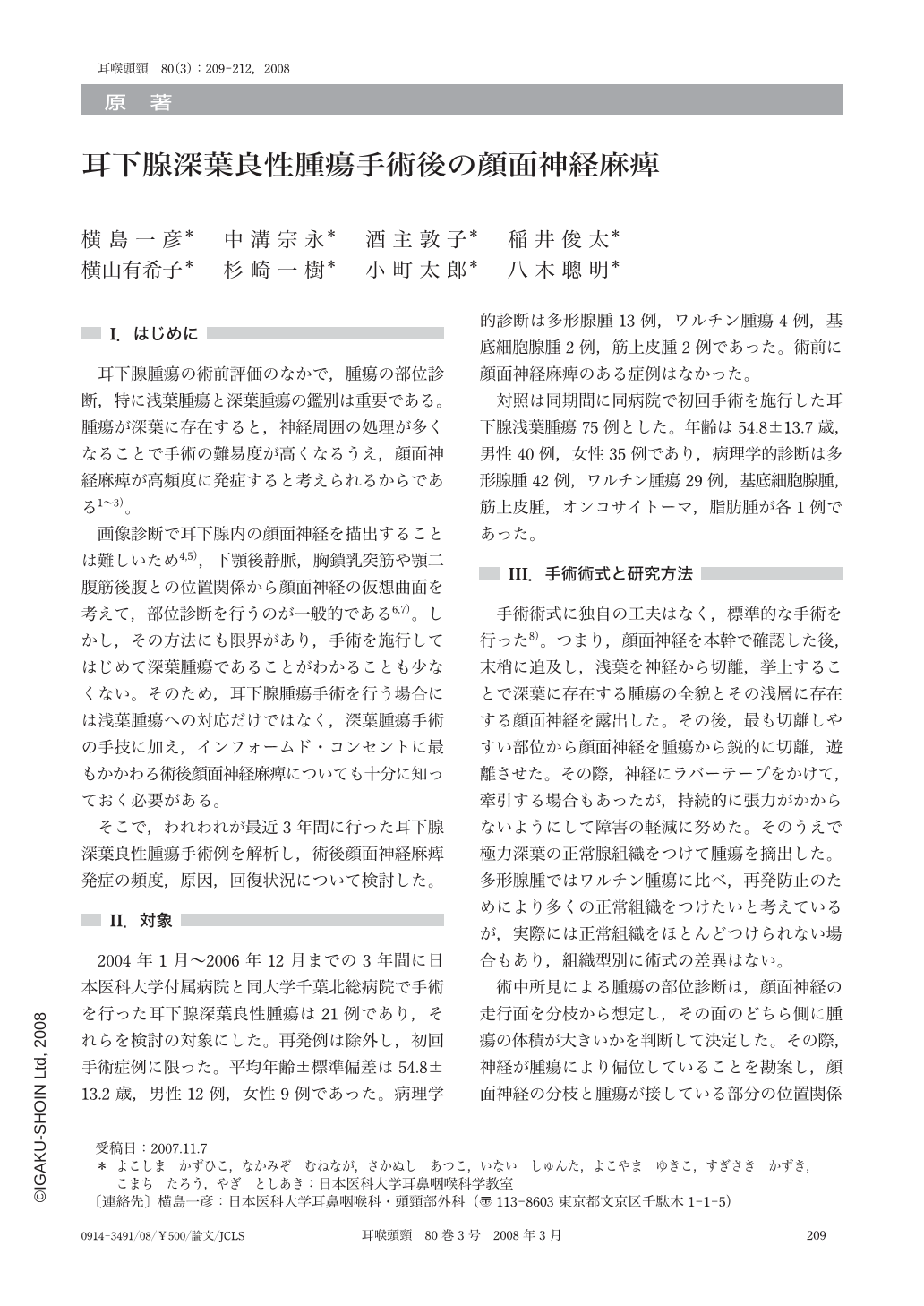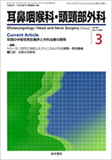Japanese
English
- 有料閲覧
- Abstract 文献概要
- 1ページ目 Look Inside
- 参考文献 Reference
Ⅰ.はじめに
耳下腺腫瘍の術前評価のなかで,腫瘍の部位診断,特に浅葉腫瘍と深葉腫瘍の鑑別は重要である。腫瘍が深葉に存在すると,神経周囲の処理が多くなることで手術の難易度が高くなるうえ,顔面神経麻痺が高頻度に発症すると考えられるからである1~3)。
画像診断で耳下腺内の顔面神経を描出することは難しいため4,5),下顎後静脈,胸鎖乳突筋や顎二腹筋後腹との位置関係から顔面神経の仮想曲面を考えて,部位診断を行うのが一般的である6,7)。しかし,その方法にも限界があり,手術を施行してはじめて深葉腫瘍であることがわかることも少なくない。そのため,耳下腺腫瘍手術を行う場合には浅葉腫瘍への対応だけではなく,深葉腫瘍手術の手技に加え,インフォームド・コンセントに最もかかわる術後顔面神経麻痺についても十分に知っておく必要がある。
そこで,われわれが最近3年間に行った耳下腺深葉良性腫瘍手術例を解析し,術後顔面神経麻痺発症の頻度,原因,回復状況について検討した。
In the preoperative evaluation of benign tumors of the parotid gland, it is important to distinguish between tumors of the deep lobe and those of the lateral lobe. Since surgery for tumors of the deep lobe is sometimes much more complicated than that of the lateral lobe, the incidence of postoperative facial palsy is rather higher after surgery for tumors of the deep lobe. By a retrospective analysis of our experience of 21 cases, we tried to assess the frequency of facial palsy after parotidectomy in patients with benign tumor arising from the deep lobe.
The incidence of postoperative facial palsy for the tumors of the deep lobe was significantly higher(33%)than that of lateral lobe. However, the facial palsy was transient in 6 out of 7 cases and there was recovery within 6 months.

Copyright © 2008, Igaku-Shoin Ltd. All rights reserved.


